#pci 4.0
Explore tagged Tumblr posts
Text
Is PCI Express 3.0 Still Relevant in 2025?
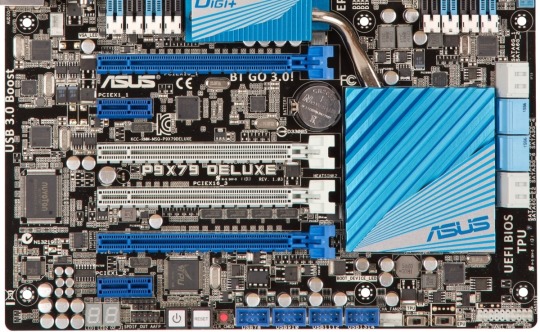
As of 2025, PCI Express (PCIe) 3.0, which was first introduced back in 2010, may seem outdated compared to its newer counterparts like PCIe 4.0, 5.0, and even the emerging PCIe 6.0. However, despite its age, PCIe 3.0 continues to be relevant in various contexts due to its widespread adoption, adequate performance for many tasks, and the economic value it offers to a broad range of users.
One of the key reasons PCIe 3.0 remains viable is its sufficient bandwidth for the majority of general-purpose computing needs. PCIe 3.0 offers a per-lane throughput of 1 GB/s (8 GT/s), which scales to 16 GB/s in a full x16 slot. This level of performance is still more than adequate for many mainstream graphics cards, network adapters, storage devices, and other expansion cards used in consumer and business-grade desktops. Many popular graphics cards released up to 2022–2023, such as the NVIDIA GTX 1660 series or AMD RX 580, do not saturate a PCIe 3.0 x16 lane. Even modern GPUs, when used for gaming at 1080p or 1440p resolutions, often show minimal performance differences between PCIe 3.0 and 4.0 in real-world usage.
In the enterprise and data center sectors, where cutting-edge performance is often a priority, PCIe 4.0 and 5.0 have found more rapid adoption due to their higher bandwidths and improved latency. However, in budget-conscious environments or where older hardware is still operational, PCIe 3.0 remains in active use. It's not uncommon to find servers and workstations built around Intel Xeon or AMD EPYC platforms from a few years ago that still rely on PCIe 3.0, particularly in roles that don’t demand maximum throughput, such as file servers or office infrastructure.
Another reason PCIe 3.0 continues to be relevant is its broad compatibility. Many motherboards still include PCIe 3.0 slots, and most modern PCIe 4.0 and 5.0 devices are backward-compatible with PCIe 3.0. This means users can mix and match components more freely, extending the life of their systems without having to overhaul the entire platform.
From a cost perspective, PCIe 3.0 components are significantly cheaper than their newer counterparts. Budget-conscious users and small businesses can take advantage of these cost savings without compromising too much on performance. For example, PCIe 3.0 NVMe SSDs are still fast enough for everyday computing tasks and gaming, and they are often available at a fraction of the cost of newer PCIe 4.0 or 5.0 models.
In conclusion, while PCIe 3.0 is no longer cutting-edge, it remains a relevant and practical interface standard in 2025. Its combination of sufficient performance, widespread availability, backward compatibility, and cost-effectiveness ensures it still has a place in many systems—especially for those not operating at the bleeding edge of technology. As long as hardware demands stay within reasonable limits for general use, PCIe 3.0 will continue to serve reliably for years to come.
1 note
·
View note
Text

PCI DSS 4.0, PCI Compliance,
Payment Security, PCI DSS 4.0 Implementation Guide
0 notes
Text
PNY GeForce™ RTX 4080 Super™ 16GB VERTO™ Overclocked Triple Fan DLSS 3
Profitez de l'offre exceptionnelle de la PNY GeForce™ RTX 4080 Super™ 16GB VERTO™ Overclocked avec triple ventilateur, disponible à moins de 1000 € pour les Prime Days. Ne manquez pas cette opportunité de booster vos performances de jeu avec une réduction incroyable.
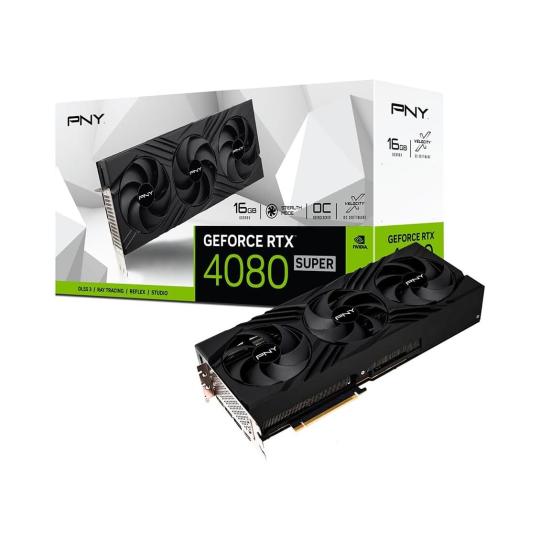
PNY GeForce™ RTX 4080 Super™ 16GB VERTO™ Overclocked Triple Fan DLSS 3 - LaRevueGeek.com
#carte graphique#NVIDIA#RTX 4080#PNY#16 Go#overclocking#triple ventilateur#DLSS 3#gaming#PCI Express 4.0
0 notes
Text
PCI Express (PCIe) 4.0 Retimer Market Analysis, Size, Share, Growth, Trends, and Forecasts 2023-2030
The Global PCI Express (PCIe) 4.0 Retimer market emerges as a crucial player, exemplifying the relentless pursuit of enhancing data transfer capabilities. This market, characterized by its robust technological underpinnings, plays a pivotal role in addressing the escalating demand for high-speed data transmission across various industries.
The Global PCI Express (PCIe) 4.0 Retimer market is a specialized segment within the broader realm of electronic components, dedicated to optimizing and refining the performance of PCIe 4.0 interfaces. These retimers, acting as signal conditioning devices, exhibit a profound impact on data integrity and signal quality, ensuring seamless communication within intricate electronic systems.
The significance of PCIe 4.0 Retimers lies in their ability to mitigate the challenges posed by signal degradation and attenuation in high-speed data transmissions. As data rates continue to surge, maintaining signal integrity becomes paramount, and these retimers play a pivotal role in revitalizing signals, thereby enabling the sustained delivery of data at unprecedented speeds. This technological prowess is particularly crucial in applications where real-time data processing and low-latency communication are imperative.
In electronic design and integration, the importance of PCIe 4.0 Retimers extends beyond mere signal conditioning. These components contribute significantly to the overall efficiency and reliability of electronic systems, fostering a seamless flow of information across interconnected devices. Whether in data centers, telecommunications infrastructure, or high-performance computing environments, the role of PCIe 4.0 Retimers is indispensable in meeting the escalating demands for faster and more reliable data transfer.
Furthermore, the Global PCI Express (PCIe) 4.0 Retimer market serves as a catalyst for innovation in the broader electronics industry. As the demand for higher data bandwidth continues to grow, the market drives research and development efforts to push the boundaries of signal processing and data transmission technologies. This fosters a competitive environment where advancements in PCIe 4.0 Retimers not only keep pace with market requirements but also anticipate future needs, positioning this segment as a cornerstone in the evolution of digital connectivity.
Global PCI Express (PCIe) 4.0 Retimer market is estimated to reach $20,260.0 Million by 2030; growing at a CAGR of 23.5% from 2023 to 2030.
Get a Free Sample Report:https://www.metastatinsight.com/request-sample/2510
Contact Us:
+1 214 613 5758

#PCI#Express#(PCIe) 4.0 Retimer#market#marketsize#marketoutlook#marketkeytrends#marketshares#marketforecast#industryanalysis#businessinsights#intelligence#marketgrowth#marketanalysis#marketdemand#marketreport#markettrend#marketresearch
0 notes
Text
Why PCI DSS 4.0 Should Be on Your Radar?
0 notes
Note
☢
radon sensor is back online :)
1st floor: 2.0 pCi/L
basement: 4.0 pCi/L
20 notes
·
View notes
Text
MSI Ventus GeForce RTX 4060 8GB GDDR6 PCI Express 4.0 x8 ATX Video Card RTX 4060 VENTUS 2X BLACK 8G OC


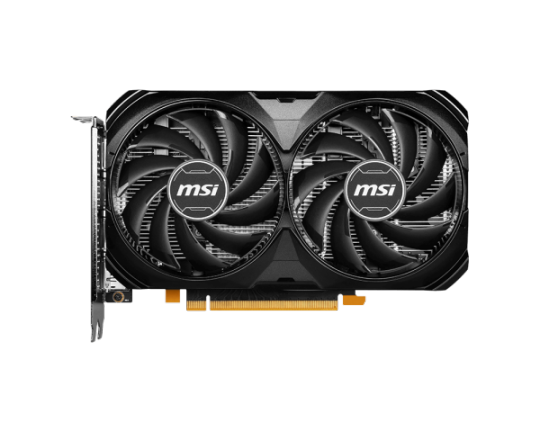
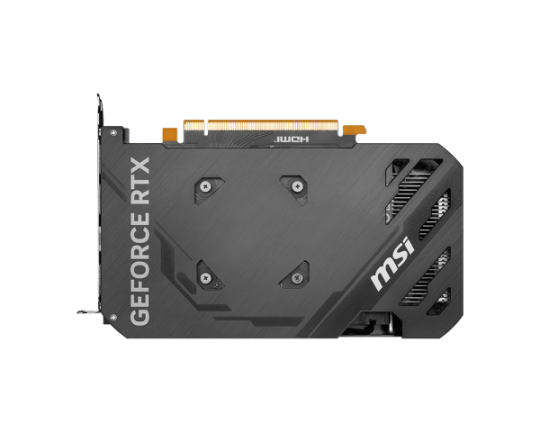
3 notes
·
View notes
Text
What's the issue with GPUs that use x8 lanes of PCIe?
This will be my attempt at a simplified explanation.
I might get some details wrong, so if I've made a mistake, please politely let me know.
Short explanation
8 lanes will have half the available bandwidth of 16 lanes. On a cutting-edge computer this isn't an issue at all, as that's all these smaller GPUs need.
However, these budget/mainstream GPUs are more likely to be used with older hardware, and when paired with older systems with slower PCIe speeds (i.e. PCIe version), having fewer PCIe lanes available will result in a tighter bandwidth crunch.
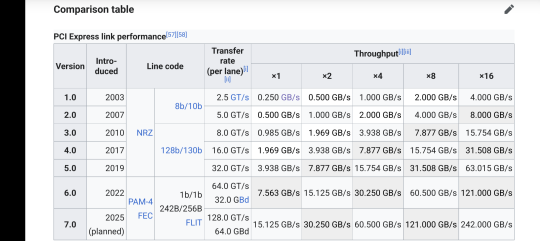
Image attribution: PCI Express – Wikipedia. CC BY-SA 4.0
Technical explanation, using real world examples
The newest generations of GPUs run as high as PCIe 5.0, which is still pretty recent in consumer hardware, so there are still a lot of systems with PCIe 4.0 graphics slots, and plenty more with PCIe 3.0.
Users of these systems may be in search of a GPU upgrade right now. Chances are if you're using an older system, you're eyeing up a cheaper GPU. – This is something I can personally speak to.
Radeon RX 6600 and RX 7600 series and NVIDIA RTX 3050 and RTX 4060 series run at PCIe 4.0 x8. Higher-end models from these lineups are 4.0 x16, including RTX 3060.
NVIDIA RTX 5060 and RTX 5060 Ti run at PCIe 5.0 x8. On paper, this is the same as PCIe 4.0 x16. – When used with a PCIe 4.0 slot however, it'll be knocked down to 4.0 x8, half the available bandwidth that other GPUs would have on this system.
It's just been revealed this week that AMD's direct price/performance competitor in Radeon RX 9060 XT actually runs at PCIe 5.0 x16. In a PCIe 5.0 slot it probably isn't fast enough to saturate all PCIe lanes while gaming, but in a PCIe 4.0 x16 slot, you still have access to the same bandwidth that the RTX 5060 Ti would have at PCIe 5.0.
That's a lot of talk about bandwidth, but is this even an issue? Well… it depends.
As for the "why" of all of this…
Depending on what you use your system for, all of this bandwidth talk might not even be an issue for you. – I myself am using a PCIe 4.0 x16 GPU on a PCIe 2.0 system like some kind of weirdo.
But, to attempt to explain why this might be an issue:
(This is inevitably going to derail into a discussion about if 8GB of video memory is enough for games today, and I apologise for that.)
The reason that PCIe bandwidth has been a talking point lately is because modern game engines rely a lot more on streaming assets from storage into video memory as they're required. Many new games are pretty smart about using whatever available video memory they have access to, but some games do start having issues once the system runs out of VRAM.
Now, it's my personal opinion that the online hate for 8GB GPUs, while not unwarranted, is overblown – however,
The fact is that an 8GB GPU, such as these 60-class mainstream models, is going to be swapping memory a lot more frequently than a GPU with 12 or 16GB, and so having as much PCIe bandwidth as possible becomes paramount the less VRAM you have.
As people have been talking about this more and outlets have been testing the newest GPU models, we've seen just how potentially problematic this pair of VRAM and bandwidth limitations can be in some newer games.
Recently there's been some infamous coverage from Hardware Unboxed showing that the RTX 5060 Ti 8GB has a visible performance degradation compared to RTX 5060 Ti 16GB. – There are some flaws to their methodology and it's certainly a sensational headline that people have been relentlessly quoting, but the issue they demonstrate is real.
When it comes to PCIe bandwidth, TechPowerUp has observed through testing the RTX 5060 Ti that the RTX 5060-series is really hampered when knocked down to PCIe 4.0, something that isn't currently a huge issue with the higher end RTX 50 models which use the full 16 lanes.
In most games available today, VRAM issues can still be mitigated by using reasonable settings levels. The concern is that this won't be enough forever, and a small selection of games are already pushing what these ubiquitous 8GB VRAM GPUs can handle.
Wrap-up
Steam user surveys suggest that 8GB desktop and laptop GPUs, particularly from NVIDIA, are still some of the most popular GPUs used for gaming. It's also worth noting however that the most popular PC games tend to be the free or esports titles that don't necessarily need cutting edge hardware.
There are still a lot of players gaming on CPUs from 7 or more years ago too. When you're upgrading an older system and don't have a lot of money, you're going to buy what you can afford, and when it comes to graphics cards that may soon be the RTX 5060 (non-Ti). VRAM limits paired with bandwidth limits of these cards on older systems may prove problematic in future, and people may not be aware of why they're getting the performance issues they are.
3 notes
·
View notes
Text
I think I'm done testing the pc now, it's been a week without any issues. I still feel the anxiousness about it lingering every day but I'm hoping that will start to dissipate day by day now that it seems to be working as it should. Finally got around testing with bg3 + a bunch of other things running, and that was a nice thing to witness. I think bg3 is the "heaviest" game i have on hand to test with, and i still have it in recent memory how it ran on my old pc to compare. My old pc could barely run it on lowest settings with the temps hovering in the 80's even with the side of the case entirely off, during winter when my room temp is below 20C. This thing runs it at max settings at steady 50C during a heatwave when it's 25+ in here as well. Aside from the momentary spikes while loading scenes as usual, but didn't notice any of those go beyond 70 either. Which to me seems pretty good for a setup that "is going to run very hot" according to many. The case still has space for extra fans at the top as well if i ever need a little more wind in there. My old machine served well for 8 years, so here's to hoping this can do the same now that it works. Specs under read more for anyone curious
Intel Core i7-14700KF + Thermalright Peerless Assassin 120 heatsink GeForce RTX 4070 12 GB GDDR6X MSI MAG Z790 Tomahawk Lexar NM790 4 TB PCI Express 4.0 NVMe Corsair Vengeance 2 x 16 GB, DDR5, 6000 MHz EVGA SuperNOVA 850 P6 Fractal Design North
#after typing this it came into mind that maybe the ultimate test will be seeing how many mods can i put into minecraft and still run it ok#lmao#time to report the good news back to the store as well#and let the helpful nerds on the tech forums know the results with one final thank you for their assistance#I sure hope i'll never have to go through this again jeebus criibus
9 notes
·
View notes
Photo

MSI H610M-E PRO Intel LGA1700 M-ATX Motherboard MSI PRO series motherboards help users work smarter by delivering an efficient and productive experience. Featuring stable functionality and high-quality assembly, PRO series motherboards provide not only optimized professional workflows but also less troubleshooting and longevity. MSI motherboards feature tons of convenient and smart designs for DIY users, and countless system tuning and troubleshooting tools are at your disposal to push your system to new heights and satisfy even the most demanding tweaker. This makes it so easy to install your own motherboard without any issues. MSI motherboards let you manage speeds and temperatures for all your system and CPU fans. Total Fan Control allows you to check your primary system characteristics in a simplified graphical interface. You can also set up to 4 temperature targets for CPU and motherboard, which will adjust the fan speeds automatically. Detecting CPU & GPU temperatures and automatically adjusting fan duty of system fans to a proper value by adopting MSI AI ENGINE. The most important thing about DIY is expandability. MSI PRO series motherboards feature plenty of possibilities for prosumers’ needs. Stable LAN, faster storage and USB transfer speeds and other expandable connectors are ready to enlarge your flexibility. Stay connected with Intel® LAN, optimized for stable internet throughput and ideal for championship-level online playing. MSI PRO series motherboards are designed to satisfy any professional workflow. Elevate your listening pleasure and enjoy the extreme sound quality. Moreover, with years of experience in creating performance-enhancing tools that are easy to use, only the highest quality applications are at your disposal. The extensive features let you fine-tune your system to deliver reliable maximum performance. MSI lightning Gen 4 PCI-E is the latest and the fastest PCI-E data transfer solution with 64GB/s of transfer bandwidth that has doubled compared to its previous generation. PCIe 4.0 maintains both backward and forward compatibility with older and newer specifications. Optimized by steel armor design, your motherboards can support the weight of heavy graphics cards. MSI conducts thorough memory testing with the most popular memory brands under extreme conditions to ensure your system runs stable no matter what. Our memory partners include brands like Corsair, Crucial, Kingston, G.Skill and many more to optimize memory modules and configurations. Core Boost technology combines MSI’s premium layout and optimized power design which allows for faster and undistorted current delivery to the CPU at pin-point precision. Not only supporting multi-core CPU, also creating the perfect conditions for your CPU overclocking. FEATURES: Supports 12th Gen Intel® Core™, Pentium® Gold and Celeron® processors for LGA 1700 socket Supports DDR4 Memory, up to 3200(MAX) MHz Core Boost : With premium layout and digital power design to support more cores and provide better performance Memory Boost: Advanced technology to deliver pure data signals for the best performance, stability and compatibility Lightning Fast Experience: PCIe 4.0 Audio Boost: Reward your ears with studio grade sound quality Steel Armor: Protecting VGA cards against bending and EMI for better performance, stability and strength. SPECIFICATIONS: Socket: 1700 CPU Support: Supports 12th Gen Intel® Core™ Processors, Pentium® Gold and Celeron® Processors up to i9 Chipset: Intel® H610 Chipset DDR4 Memory: 3200(MAX) / 3000 / 2933 / 2800 / 2666 / 2400 / 2133 MHz Memory Channel: Dual Channel DIMM Slots: 2 Max Memory (GB): 64 PCI-E x16: 1 PCI-E x1: 1 SATAIII: 4 M.2 Slot: 1 TPM (Header): 1 LAN: 1x Realtek® RTL8111H Gigabit LAN controller USB 3.2 ports (Front): 2(Gen 1, Type A) USB 3.2 ports (Rear): 2(Gen 1, Type A) USB 2.0 ports (Front): 4 USB 2.0 ports (Rear): 4 Audio ports (Rear): Realtek® ALC897 Codec VGA: 1 HDMI: 1 DirectX: 12 Form Factor: mATX Operating System: Support for Windows® 11 64-bit and Windows® 10 64-bit WHAT’S IN THE BOX: MSI PRO H610M-E DDR4 Intel 1700 mATX Motherboard – Black x1 SATA Cables x2 EZ M.2 Clip x1 I/O Shield x1 Quick Install Guide x1
2 notes
·
View notes
Note
MSI Ventus GeForce RTX 4060 8GB GDDR6 PCI Express 4.0 x8 ATX Video Card RTX 4060 VENTUS 2X BLACK 8G OC
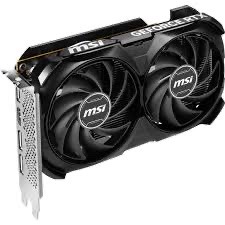
2 notes
·
View notes
Text
Price: [price_with_discount] (as of [price_update_date] - Details) [ad_1] From the manufacturer The Ultimate SSDReach max performance of PCIe 4.0. Reach max performance of PCIe 4.0. Experience longer-lasting, opponent-blasting speed. The in-house controller's smart heat control delivers supreme power efficiency while maintaining ferocious speed and performance, to always keep you at the top of your game. PCIe 4.0 speed maximized Huge speed boost. 990 PRO offers sequential read/write speeds up to 7,450/6,900 MB/s reaching near the max performance of PCIe 4.0. 40% and 55% faster random read/write speeds than 980 PRO 2TB - up to 1,400K/1,550K IOPS, while 4TB even higher random read speed of up to 1,600K IOPS. Breakthrough power efficiency More power-efficient performance. Higher performance usually consumes more power. But, 990 PRO uses less power with up to 50% improved performance per Watt over 980 PRO. This low-power design makes max PCIe 4.0 performance possible with optimal power efficiency. 980 PRO Sequential Read/Write - 1,129/877 MB/Watt, 990 PRO Sequential Read/Write - 1380/1319 MB/Watt based on internal test result of 1TB capacity model. Game like a pro Secure victory with 990 PRO expanded 4TB capacity, empowering you with a random read speed of up to 1,600,000 IOPS. Witness faster loading times on your PC and PlayStation 5, as it breathes life into your games. Samsung Magician software Unlock the full power of 990 PRO. Samsung Magician software's user-friendly suite of optimization tools always gets you the best SSD performance. Protect data, get updates, monitor drive health, and set up LED color combinations. Your personal SSD toolkit. HUGE SPEED BOOST: Get random read/write speeds that are 40%/55% faster than 980 PRO; Experience up to 1400K/1550K IOPS, while sequential read/write speeds up to 7,450/6,900 MB/s reach near the max performance of PCIe 4.0* BREAKTHROUGH POWER EFFICIENCY: Use less power and get more performance; Enjoy up to 50% improved performance per watt over 980 PRO, plus optimal power efficiency with max PCIe 4.0 performance** SMART THERMAL CONTROL: Samsung's own nickel-coated controller delivers effective thermal control; With its slim size, 990 PRO is a perfect fit for desktops and laptops that meet the PCI-SIG D8 standard*** THE CHAMPION MAKER: Up to 65% improvement in random performance enables faster loads for an ultimate gaming experience on PS5 and DirectStorage PC games**** SAMSUNG MAGICIAN SOFTWARE: Get the most out of your SSD with Samsung Magician's advanced yet intuitive optimization tools; Monitor drive health, protect valuable data, and receive important updates for your 990 PRO [ad_2]
0 notes
Text
Plataforma AM5: Por Que Gamers Devem Ficar de Olho na Nova Geração da AMD
Por Vinicius Torres Oliveira

Agora é o momento de se atentar à nova plataforma AM5 da AMD. Com a introdução dos processadores Ryzen 7000 e 8000, a AM5 surge com promessas de excelência no desempenho, tecnologia avançada e um poder significativamente maior para os jogos de última geração. Mas o que realmente significa isso para quem joga? Confira as vantagens da AM5 e os motivos pelos quais ela pode ser a escolha ideal para o seu próximo sistema. 1. DDR5: Melhoria nos FPS, Menos Congestionamento A AM5 é compatível apenas com memórias DDR5, deixando a antiga DDR4 de lado. Esta é uma excelente notícia para os gamers: Frequências mais elevadas e largura de banda aumentada; Carregamento mais ágil de texturas em jogos exigentes; Multitarefa mais tranquila (ótimo para quem joga e faz streaming ao mesmo tempo). Se antes o custo da DDR5 era elevado, os preços estão diminuindo, e a diferença de desempenho nos jogos já está se tornando evidente! 2. PCIe 5.0: SSDs e GPUs em Alta Velocidade A nova linha de placas-mãe AM5 inclui PCI Express 5.0, que é o dobro da velocidade do PCIe 4.0. Isso traz impactos diretos em: SSDs NVMe da quinta geração com velocidades impressionantes (perfeito para jogos com grandes mundos como Starfield, Hogwarts Legacy e The Witcher 3 modificado); Preparação completa para futuras GPUs (você estará pronto para a próxima geração que a AMD ou NVIDIA lançar); Menos congestão em placas de captura e outros periféricos. 3. Novo Soquete, Mas Coolers Mais Antigos Servem A AM5 adota um novo formato de soquete, o LGA 1718, que é mais moderno e robusto. Mas não se preocupe, a AMD foi gentil: os coolers AM4 continuam funcionando! Ou seja: Você pode reutilizar seu watercooler ou air cooler; Ainda contará com mais estabilidade e suporte para CPUs mais potentes. 4. Durabilidade: Uma Plataforma que Vai Resistir A AMD garantiu suporte à AM5 até 2027 (ou mais!). Isso é um grande benefício para quem não quer trocar de placa-mãe sempre que um novo processador é lançado: Atualizações futuras com Ryzen 9000 e além; Economia a longo prazo; Evolução garantida sem precisar refazer todo o sistema. 5. Tecnologias Modernas para o Presente e Futuro Com a AM5, você entra atualizado e preparado para o futuro: Suporte a USB 4.0, Wi-Fi 6E e Bluetooth 5.2; Gráficos integrados com suporte a HDMI 2.1 e DisplayPort 2.0 (ideal para um sistema secundário); BIOS modernas e atualizações mais seguras. É o Melhor Momento para Mudar? Se você é um gamer em busca de um PC que seja durável, rápido e capaz de suportar a próxima geração de jogos AAA, a AM5 representa a escolha correta. Sim, o investimento inicial é mais alto do que o de uma plataforma AM4, mas os ganhos em desempenho, tecnologia e longevidade compensam. Em resumo: a AM5 é a fundação perfeita para quem deseja aproveitar tudo no máximo hoje — e continuar no auge por muitos anos.
0 notes
Text

Understanding PCI DSS vs. ISO/IEC 27001: Two Pillars of Information Security
In today's threat-laden digital landscape, organizations face increasing pressure to safeguard sensitive data. Two prominent frameworks—PCI DSS and ISO/IEC 27001—often come up in conversations around information security and compliance. While they share some goals, they serve very different purposes. Here’s what you need to know.
🔐 PCI DSS: Purpose-Built for Payment Card Data
The Payment Card Industry Data Security Standard (PCI DSS) is a prescriptive set of security standards developed by major credit card companies (Visa, MasterCard, etc.) to protect cardholder data. It is mandatory for any organization that stores, processes, or transmits credit card information.
Key Characteristics:
Focused specifically on payment card data.
Enforced by payment brands and acquirers.
Includes technical and operational requirements (e.g., firewalls, encryption, access control).
Updated regularly to respond to evolving threats (currently version 4.0).
Goal: Prevent payment card fraud by securing cardholder data at every point in the transaction process.
🛡️ ISO/IEC 27001: A Global Standard for Information Security
ISO/IEC 27001 is an internationally recognized standard that provides a framework for establishing, implementing, maintaining, and continually improving an Information Security Management System (ISMS).
Key Characteristics:
Risk-based and process-oriented approach.
Covers all forms of data (not just cardholder data).
Applicable to organizations of any size or sector.
Emphasizes continuous improvement and risk management.
Certification demonstrates a commitment to security best practices.
Goal: Protect the confidentiality, integrity, and availability of information assets, based on a broad set of risks.
🧩 How They Interact: Complementary, Not Competitive
PCI DSS is highly specific and mandatory for certain businesses, but lacks the enterprise-wide risk-based flexibility of ISO 27001.
ISO 27001 is strategic and holistic, making it ideal for broader information governance across business units.
For organizations that handle payment data, implementing ISO 27001 can strengthen their PCI DSS compliance by embedding strong governance, risk management, and policy enforcement.
✅ Bottom Line
PCI DSS: Tactical, industry-specific, compliance-driven.
ISO 27001: Strategic, universal, risk-driven.
0 notes
Note
☢️
1st floor: 2.0 pCi/L
basement: 4.0 pCi/L
13 notes
·
View notes